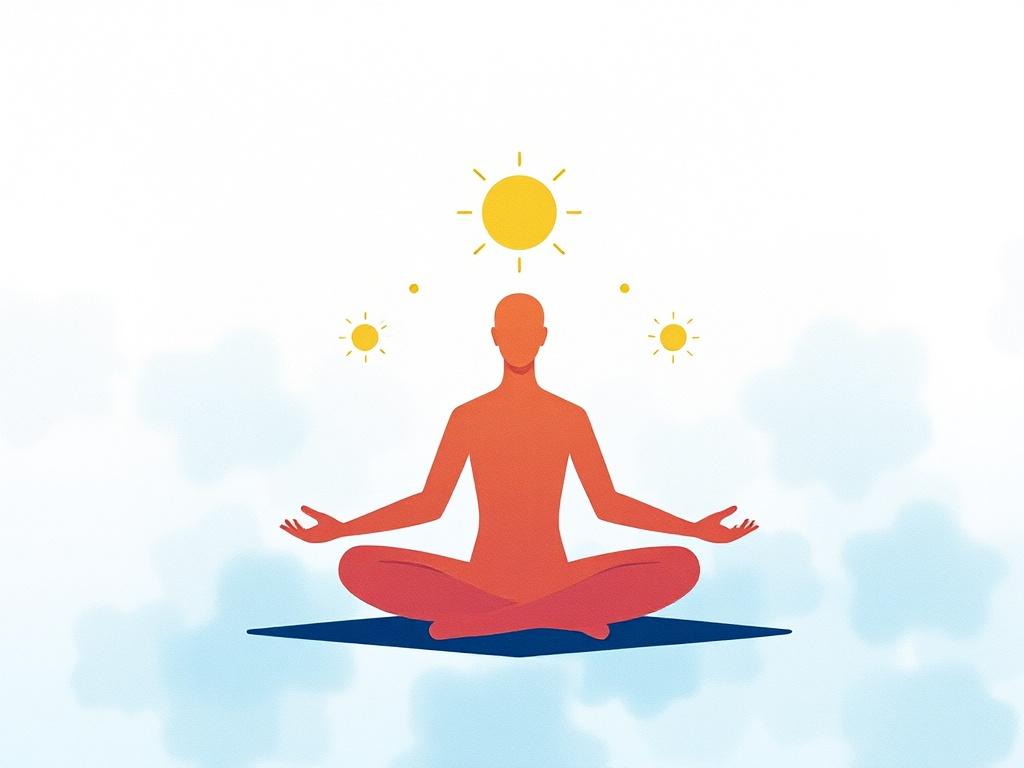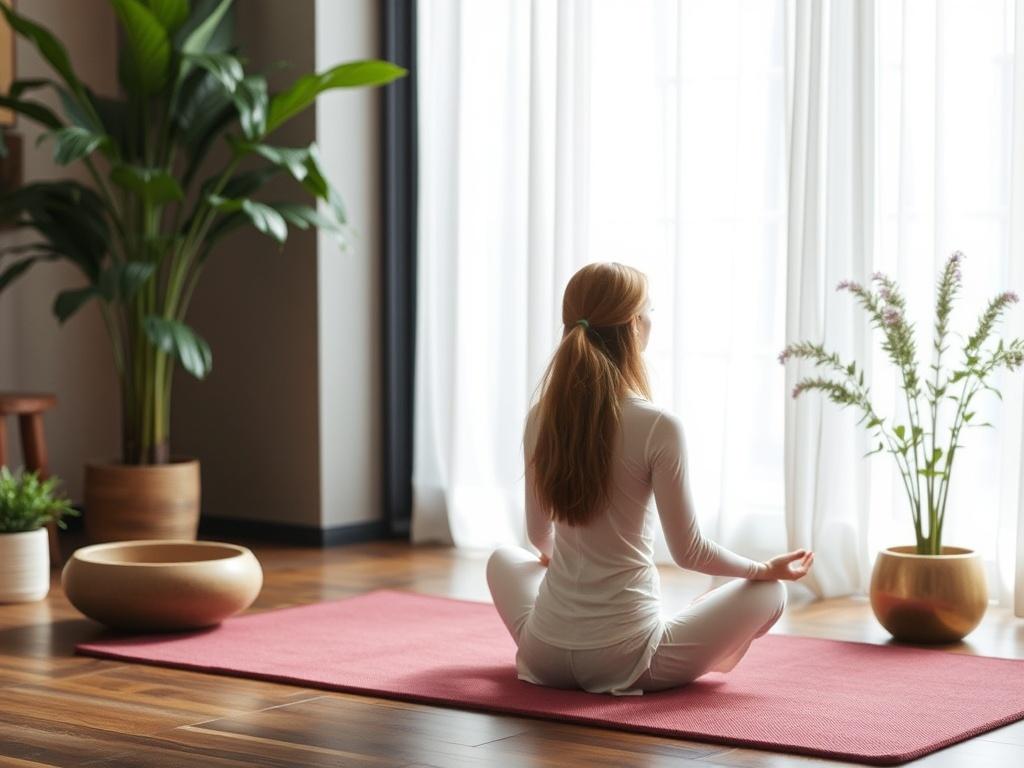What Is Mindfulness Meditation?

Mindfulness meditation is a practice that has gained widespread popularity in recent years, but its roots go back thousands of years. At its core, mindfulness meditation is about cultivating a focused awareness on the present moment—observing your thoughts, feelings, and sensations without judgment. It’s about being fully awake and aware of what’s happening right now, rather than letting your mind wander into the past or the future.
This simple yet powerful approach can be done almost anywhere and by anyone. Whether you’re sitting quietly, walking, or even eating, mindfulness meditation invites you to slow down and tune in to the richness of your experience. The goal isn’t to empty your mind or to achieve some special state, but rather to develop an ongoing awareness of your inner and outer world.
Benefits of Mindfulness Meditation

There are countless benefits of mindfulness meditation that make it worth exploring. When practiced consistently, mindfulness meditation can transform your mental, emotional, and physical well-being in profound ways. Let’s break down some of these benefits:
Mental Health Benefits
Mindfulness meditation helps reduce symptoms of anxiety and depression by teaching you how to respond to stressors calmly instead of reacting impulsively. By enhancing emotional regulation, mindfulness meditation increases resilience, allowing you to bounce back from setbacks more easily. Research has also shown that mindfulness meditation can improve focus and cognitive flexibility, which is especially helpful in today’s fast-paced world where distractions are everywhere.
Physical Health Benefits
Beyond the mind, mindfulness meditation has significant physical health benefits. Regular mindfulness practice has been associated with lower blood pressure, improved immune system function, and reduced chronic pain. Some studies even suggest that mindfulness meditation can positively impact heart health by reducing inflammation markers linked to cardiovascular disease.
Benefits for Everyday Life
Mindfulness meditation spills over into daily activities by helping you savor life’s moments more fully. Whether it’s enjoying a meal, spending time with loved ones, or simply walking in nature, mindfulness enhances your engagement and appreciation. It also fosters better communication and empathy, improving your relationships both at home and work.
Essential Techniques for Practicing Mindfulness Meditation
Starting with mindfulness meditation can seem daunting, but it’s easier than you might think. The key is to find a technique that resonates with you and to practice it with patience and consistency. Here are some fundamental techniques to explore:
Breath Awareness Meditation
One of the simplest and most accessible mindfulness meditation techniques involves focusing your attention on your breath. Sit comfortably, close your eyes, and notice the sensation of air entering and leaving your nostrils or the rise and fall of your chest or belly. When your mind wanders, gently bring it back to the breath without judgment.
Body Scan Meditation
The body scan is a technique where you systematically bring attention to different parts of your body—from your toes to your head—observing any sensations without trying to change them. It’s a wonderful way to deepen your connection to your physical self and to notice tension or discomfort that you didn’t realize was there.
Walking Meditation
If sitting still isn’t your cup of tea, walking meditation can be an excellent alternative. Here, mindfulness is combined with gentle movement. Pay attention to the movement of your feet and legs, the feeling of the ground beneath you, the rhythm of your steps, and the environment around you. This practice helps anchor you in the present moment while engaging your body.
Mindful Eating
Another practical technique is mindful eating. This involves paying careful attention to the taste, texture, smell, and even the sounds of eating. Mindful eating helps combat overeating and emotional eating by reconnecting you with your body’s hunger and fullness signals.
Use of Guided Mindfulness Meditation
If you’re new to mindfulness meditation, guided sessions can be a helpful tool. Available through apps, videos, and audio recordings, guided meditation provides step-by-step instructions that make it easier to establish a regular practice. These guided approaches vary from short 5-minute sessions to longer meditations designed for deeper relaxation and insight.
How to Build a Consistent Mindfulness Meditation Practice
Creating a sustainable mindfulness meditation habit takes intention and dedication. Here’s a simple roadmap to set you up for success:
- Start Small: Begin with just 5 or 10 minutes daily to avoid feeling overwhelmed.
- Choose a Quiet Space: Find a comfortable corner where you won’t be disturbed.
- Set a Regular Time: Consistency helps. Try meditating at the same time each day, such as morning or before bed.
- Be Gentle with Yourself: It’s normal for the mind to wander. Simply notice and return to your point of focus without frustration.
- Track Your Progress: Use a journal or app to record your practice and note any changes in mood or stress levels.
- Explore Different Techniques: Mix and match methods to keep your practice engaging and suited to your lifestyle.
Common Challenges and How to Overcome Them
While mindfulness meditation is accessible, many beginners encounter challenges along the way. Here are some common hurdles and tips for overcoming them:
| Challenge | Explanation | Solution |
|---|---|---|
| Restless Mind | Your mind jumps from thought to thought making it hard to focus. | Accept that mind wandering is normal. Gently guide your attention back to your breath or chosen focus point. |
| Physical Discomfort | Sitting still for long can cause aches or stiffness. | Adjust your posture, use cushions, or try walking meditation to stay comfortable. |
| Feeling Bored | Repetitive practice may feel dull or uninspiring. | Vary your meditation techniques or incorporate mindfulness in everyday activities to stay engaged. |
| Lack of Time | Busy schedules make it hard to find time to meditate. | Integrate brief mindfulness moments into your routine, like mindful breathing during breaks or before meals. |
| Doubt About Effectiveness | You may wonder if meditation is “working” or if you’re doing it right. | Focus on the process rather than outcomes. Benefits often build gradually, so keep practicing patiently. |
Mindfulness Meditation in Different Settings
Mindfulness meditation isn’t just for home practice. Many people integrate it into various settings to reap maximum benefits:
Workplace Mindfulness Meditation
Introducing mindfulness meditation techniques at work can reduce stress, improve focus, and increase job satisfaction. Short mindfulness breaks during busy days help clear mental clutter and boost productivity. Some companies now offer mindfulness training sessions and quiet spaces for employee meditation.
Mindfulness Meditation for Students
Students can benefit enormously from mindfulness practices by managing exam stress, improving concentration, and enhancing emotional resilience. Schools and universities are increasingly adopting mindfulness programs to support student well-being and academic performance.
Mindfulness Meditation for Seniors
For older adults, mindfulness meditation offers gentle ways to support cognitive health, reduce chronic pain, and combat feelings of loneliness or anxiety. Group meditation sessions also provide social connection along with mental and physical benefits.
Scientific Research Supporting Mindfulness Meditation

Scientific interest in mindfulness meditation has led to a growing body of research validating its many benefits. Studies using brain imaging techniques have revealed that mindfulness meditation can increase gray matter density in areas associated with learning, memory, and emotional regulation. Other research has demonstrated decreased activity in the amygdala—the brain’s fear and stress center—after mindfulness training.
A meta-analysis published in the Journal of the American Medical Association found that mindfulness meditation programs can help alleviate anxiety, depression, and pain. Additionally, randomized controlled trials have linked mindfulness meditation to improvements in sleep quality, greater immune function, and even slower biological aging markers.
Mindfulness Meditation vs. Other Forms of Meditation
Meditation comes in many forms, each with unique qualities and goals. Here’s an overview of how mindfulness meditation compares to some common types:
| Meditation Type | Primary Focus | Typical Goals | How Mindfulness Differs |
|---|---|---|---|
| Mindfulness Meditation | Present moment awareness | Reduce stress, cultivate acceptance, improve focus | Nonjudgmental observation of thoughts and sensations as they arise |
| Transcendental Meditation (TM) | Repetition of a mantra | Achieve deep relaxation, transcend thought | Uses a specific mantra rather than open awareness |
| Loving-Kindness Meditation | Generating compassion and goodwill | Increase empathy, kindness towards self and others | Focus on positive intentions rather than passive observation |
| Zen Meditation (Zazen) | Sitting meditation with attention to posture and breath | Insight, enlightenment | Emphasizes strict discipline and sometimes koans (riddles) |
Practical Tips for Enhancing Your Mindfulness Meditation Practice
If you’re eager to deepen your mindfulness meditation experience, here are some handy tips to consider:
- Create a Ritual: Light a candle, use incense, or play soft music to establish a calming atmosphere.
- Practice Gratitude: Start or end your meditation by reflecting on things you’re grateful for to boost positivity.
- Be Patient: Progress might be slow or subtle; your mind needs time to adapt.
- Join a Group: Meditation groups or classes can provide motivation and shared learning.
- Use Technology Wisely: Apps can offer useful guidance but avoid distractions from your phone.
- Mindfulness Off the Cushion: Bring mindfulness to daily chores like washing dishes or driving.
Recommended Resources for Mindfulness Meditation
To support your journey, here’s a list of popular and reputable resources to explore:
| Resource | Type | Description |
|---|---|---|
| Headspace | App | Offers guided mindfulness meditation sessions for all levels with a focus on stress relief and sleep. |
| Insight Timer | App | Free app with thousands of guided meditations from various teachers worldwide. |
| Mindfulness in Plain English | Book | A straightforward guide by Bhante Gunaratana that explains mindfulness meditation clearly and accessibly. |
| The Mindful Way Workbook | Book | Practical workbook designed to help develop mindfulness skills based on clinical research. |
| UCLA Mindful Awareness Research Center | Website | Provides free guided meditations and educational resources on mindfulness. |
Conclusion
Mindfulness meditation is more than just a trend—it’s an accessible and transformative practice that can enhance your mental clarity, emotional balance, and physical health. By learning to be present without judgment, you cultivate a kind of inner calm that ripples outward into every aspect of your life. Through consistent practice using diverse techniques like breath awareness, body scans, or mindful walking, anyone can develop mindfulness skills. Although challenges such as restlessness or distractions may arise, they are a natural part of the journey rather than obstacles to success. Supported by decades of scientific research, mindfulness meditation offers a simple yet profound tool for navigating life’s complexities with greater ease and joy. Whether you use guided apps, join a group, or meditate solo in your favorite quiet spot, the rewards are well worth the effort. So why not take a few moments today to pause, breathe, and truly be here now? Your mind, body, and relationships will thank you.




















